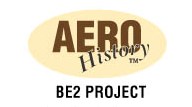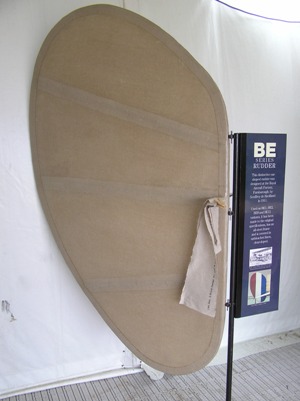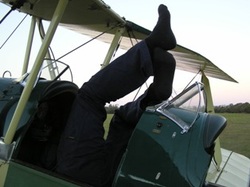Lessons in Linen
Plans are afoot for a BE2a to be completed in time for the centenary of the establishment of the Central Flying School at Point Cook, in 2014. The gift of this aircraft to the RAAF Museum, and the Australian nation, will complete the Museum's 1914 'story'; it already possesses a reproduction Deperdussin presented by Mr Jack Gillies, and, nearing completion, an airworthy Bristol Boxkite being built by Messrs Rob Gretton and Geoff Mathews who are members of the Friends of the RAAF Museum.
Andrew Willox is also a Friend of the Museum and has been planning and undertaking work on the BE since the beginning of 2007. Initial planning for a rudder was undertaken with the assistance of Transaero and work has proceeded to the completion of one example. Three rudder frames have been made in anticipation of perhaps completing more than one BE variant in due course, but the project's main thrust is the delivery of a BE2a for Point Cook.
Original specifications have been used to construct the first rudder, which is of all-steel construction. Traditional methods have been used to make the various components in a blacksmith's forge; the most complex tool used being a lathe. The ribs were cut out and fashioned by hand, although originally they would probably have been pressed out. The three hinge pairs on the rudder post were carved by hand from square bar and individually matched together and only oxy acetylene welding was employed, with solder used where specified to seal the rudder frame. Although modern aerospace metals were used for the rudder frames, ordinary mild steel will be employed throughout the rest of the aircraft as it is easier to fashion. Modern metals still rust and can provide no greater integrity for aircraft designs from this earlier period.
Traditional unbleached ‘Irish’ linen fabric to BS7F1 was imported from Belgium, being identical in quality but at a lower cost to an Irish mill. After fitting anti-chafe strips to the frame where it would contact other fabric, the pocket method was employed to fit the overall covering. Durabond in Sydney make a good-quality tautening dope and this proved to do the job well. Sewing and lacing thread was imported from LAS Industries in Britain. Finishing tapes to seal the lacing and outer edges were hand frayed and doped on to complete the fabric covering. At the present stage six coats of dope have been applied but to provide an airworthy finish a further four to six coats will be needed.
The rudder has been fitted to a presentation stand was on display in the Antique Aeroplane Association of Australia marquee at the Avalon International Airshow 2009.
Andrew Willox
Andrew Willox is also a Friend of the Museum and has been planning and undertaking work on the BE since the beginning of 2007. Initial planning for a rudder was undertaken with the assistance of Transaero and work has proceeded to the completion of one example. Three rudder frames have been made in anticipation of perhaps completing more than one BE variant in due course, but the project's main thrust is the delivery of a BE2a for Point Cook.
Original specifications have been used to construct the first rudder, which is of all-steel construction. Traditional methods have been used to make the various components in a blacksmith's forge; the most complex tool used being a lathe. The ribs were cut out and fashioned by hand, although originally they would probably have been pressed out. The three hinge pairs on the rudder post were carved by hand from square bar and individually matched together and only oxy acetylene welding was employed, with solder used where specified to seal the rudder frame. Although modern aerospace metals were used for the rudder frames, ordinary mild steel will be employed throughout the rest of the aircraft as it is easier to fashion. Modern metals still rust and can provide no greater integrity for aircraft designs from this earlier period.
Traditional unbleached ‘Irish’ linen fabric to BS7F1 was imported from Belgium, being identical in quality but at a lower cost to an Irish mill. After fitting anti-chafe strips to the frame where it would contact other fabric, the pocket method was employed to fit the overall covering. Durabond in Sydney make a good-quality tautening dope and this proved to do the job well. Sewing and lacing thread was imported from LAS Industries in Britain. Finishing tapes to seal the lacing and outer edges were hand frayed and doped on to complete the fabric covering. At the present stage six coats of dope have been applied but to provide an airworthy finish a further four to six coats will be needed.
The rudder has been fitted to a presentation stand was on display in the Antique Aeroplane Association of Australia marquee at the Avalon International Airshow 2009.
Andrew Willox



 RSS Feed
RSS Feed
